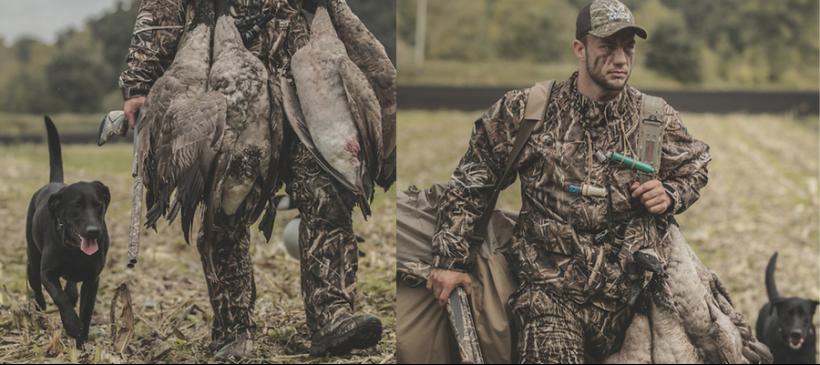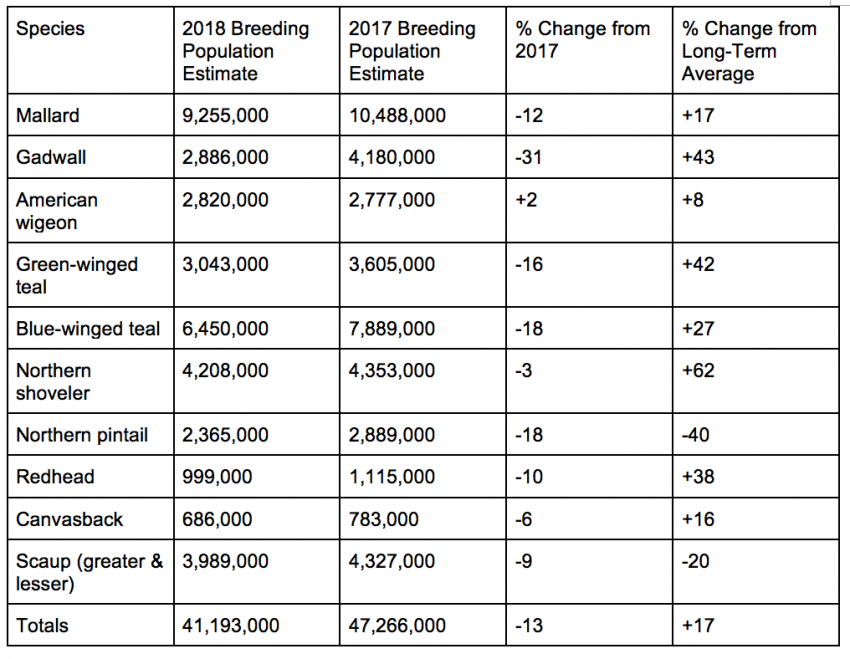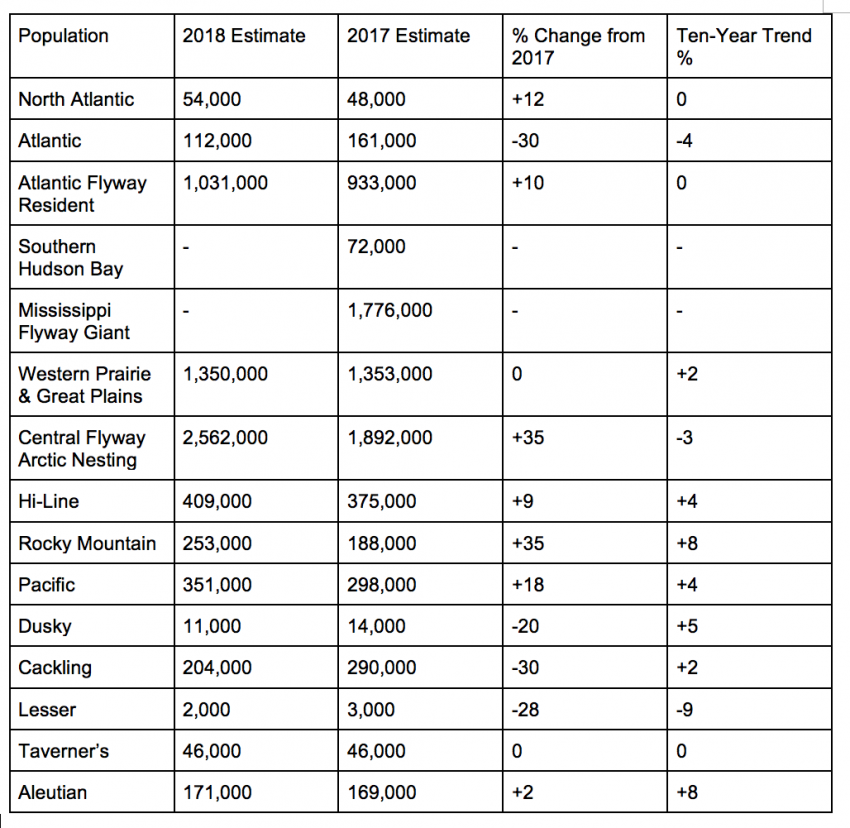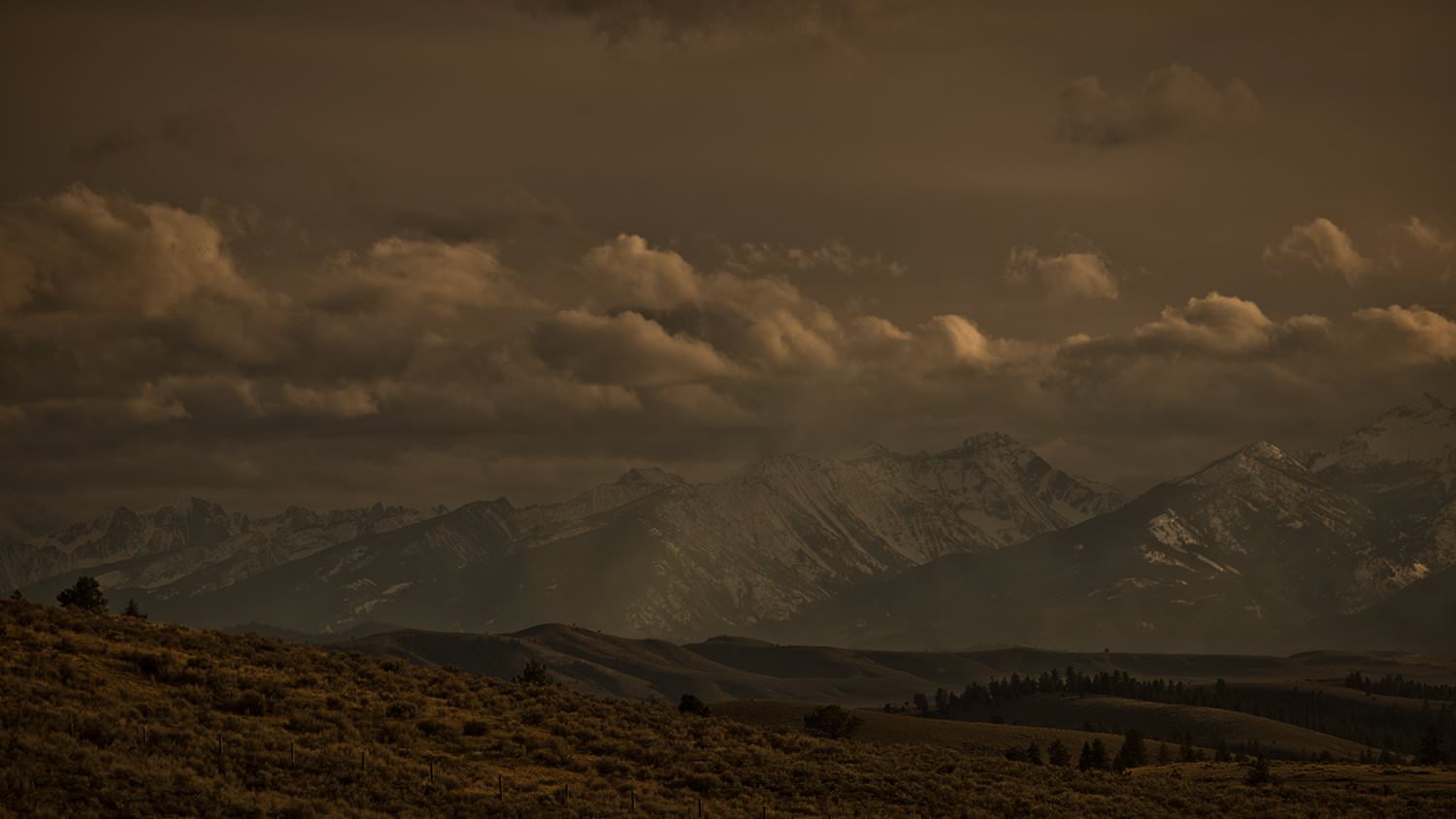2018 American Waterfowl Population Estimated at Over 41 Million Birds
- August 24, 2018
- By Todd Whitesel
- Research

Duck numbers drop but remain above average
The U.S. Fish & Wildlife Service released its Waterfowl Population Status, 2018 report August 21. This cooperative effort between USFWS and the Canadian Wildlife Service includes the most recent North American waterfowl breeding population estimates.*
The total duck population estimate for 2018 was 41.2 +/- 0.7 million birds, a 13% decrease
from 2017’s estimate of 43.7 +/- 0.8 million birds.
The breeding population decreased, but remains quite strong, with most species remaining near or above long-term averages. Ducks declined due to dry conditions in large portions of the breeding grounds. Fortunately, we continue to benefit from ‘carryover birds’ hatched during highly productive springs over the past several years.
--Dr. Frank Rohwer, president and chief scientist of Delta Waterfowl
Although down from 2017, this year’s duck numbers were 17% higher than the long-term average (LTA) from surveys conducted 1955 to 2017. And populations for eight of the 10 duck species were above LTAs.

Estimates don’t include scoters(Melanitta spp.) , eiders (Somateria spp., and Polysticta spp.), long-tailed ducks (Clangula hymenalis), mergansers ([Mergus spp. and Lephodytes cucullatus) and wood ducks (Aix sponsa).
The total waterfowl May pond estimate (encompassing Prairie and Parkland Canada and the north-central U.S.) was 5,227,000 +/- 0.2 million, 14% below the 2017 estimate of 6,096,000 +/- 0.2 million but corresponding to the LTA of 5,236,000 +/- 0.03 million.
The pond count has been above, in some cases way above, the long-term average for many years, and we’ve enjoyed huge duck estimates as a result. This year, the count is average and in some cases, well-below average.
-- Rohwer said on Delta Waterfowl’s website
Canada goose populations
Seven of the 15 Canada goose populations surveyed had positive increases from 2017. These include North Atlantic (+12%), Atlantic Flyway Resident (+10%), Central Flyway Arctic Nesting (+35%), Hi-Line (+9%), Rocky Mountain (+35%), Pacific (+18%) and Aleutian (+2%). Final estimates for Southern Hudson Bay and Mississippi Flyway Giant populations are not yet available.

Editor’s Note: It’s easy to stay current with breaking product news, industry insights and marketing tips from Realtree, American’s No. 1 camo brand. Simply click here to sign up for our free newsletter, courtesy of the Realtree Business Blog!
Check out our recent research reports:
- Popularity of Camping and Camping Equipment is Climbing
- Top 2017 Fishing Brands
- Fishing Keeps Reeling in More Anglers
- American Hunters Spend Over $26 Billion Annually
- Shopping Habits of Social Media Followers Tied to Age
- Top Hunting and Shooting Brands in 2017
- Is 2018 the end for Brick-and-Mortar Retail?
- U.S. Angler Expenditures in 2016
- Americans Spend More than $75 Billion Annually Watching Wildlife
